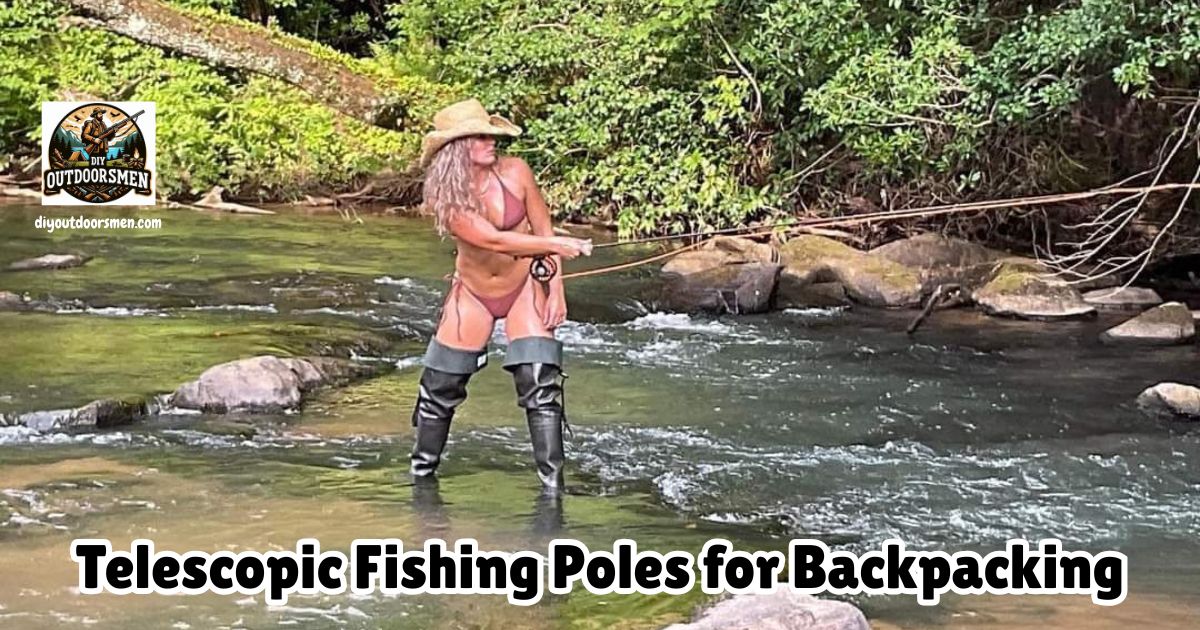Contents
- 1 Why Ultralight Telescopic Rods Matter for Backpackers
- 2 Understanding Key Features of Backpacking Telescopic Rods
- 3 Packing and Using a Telescopic Rod on the Trail
- 4 Things to Keep in Mind Before Buying
- 5 My Favorite Ultralight Telescopic Rods for Backpacking
- 6 Setting Up and Caring for Your Rod
- 7 Common Questions About Backpacker Telescopic Rods
- 8 How Ultralight Telescopic Rods Fit Into the Backpacking Lifestyle
Ultralight telescopic fishing rods have become a favorite for backpackers who love both hiking and fishing. I enjoy how these rods collapse down to a size that fits comfortably in my pack, letting me explore new waters without carrying heavy, awkward gear. I want to share what makes these rods so practical and why they often top my packing list for any trek that goes near lakes or streams.
QUICK LOOK: Features of Telescopic Fishing Rods for Backpacking
- Compact Length: A good backpacking rod collapses to under 2 feet, often less, for easy storage. This is super important when I need to fit my rod in a small daypack or strap it to the outside without snagging.
- Low Weight: Materials like carbon fiber or lightweight composites keep the rod easy to carry, sometimes weighing under 150 grams. I focus on rods under 7 ounces when weight is a top priority.
- Quick Assembly: I like rods that extend smoothly and lock into place, so I can be fishing within a minute of arriving at a creek or pond.
- Balanced Sensitivity: While not quite as sensitive as some multipiece rods, modern telescopics offer enough feedback to feel subtle bites, especially for trout or panfish.
- Variety in Sizes and Actions: It helps that I can choose different lengths and actions for various types of fishing, whether I’m after small stream trout or larger bass in lowland ponds.
- Corrosion Resistance: For trips involving saltwater or wet conditions, I opt for rods with treated or sealed components to prevent rust.
Why Ultralight Telescopic Rods Matter for Backpackers
The simplicity and convenience of ultralight telescopic rods have changed how I approach fishing during a hike. Traditional fishing rods can be long and difficult to carry, but telescopic models collapse to a length often shorter than 18 inches.
When I am hiking on rough trails or squeezing through narrow brush, this compactness makes a huge difference in comfort and mobility. Most rods are constructed from carbon fiber or fiberglass, which means they barely add any weight to my pack. This allows me to prioritize space and weight for other essentials, like food and sleeping gear.
I also really appreciate telescopic rods for their durability on the trail. Advances in construction mean that these rods hold up well on rocky, uneven ground. Their reinforced sections make accidental bumps or drops less worrisome. With the right care, they can last for many seasons of exploring.
Not only are they tough, but they also handle the random challenges the trail throws at you—like wet weather or rough handling—better than most would expect. As telescopic designs evolve, the improvements in strength and reliability become even more appealing for anyone who loves fishing in hard-to-reach places.
Understanding Key Features of Backpacking Telescopic Rods
Before buying or using an ultralight telescopic rod, it helps to understand the main features that set these apart from standard fishing gear. Here are the aspects I look for:
- Compact Length: A good backpacking rod collapses to under 2 feet, often less, for easy storage. This is super important when I need to fit my rod in a small daypack or strap it to the outside without snagging.
- Low Weight: Materials like carbon fiber or lightweight composites keep the rod easy to carry, sometimes weighing under 150 grams. I focus on rods under 7 ounces when weight is a top priority.
- Quick Assembly: I like rods that extend smoothly and lock into place, so I can be fishing within a minute of arriving at a creek or pond.
- Balanced Sensitivity: While not quite as sensitive as some multipiece rods, modern telescopics offer enough feedback to feel subtle bites, especially for trout or panfish.
- Variety in Sizes and Actions: It helps that I can choose different lengths and actions for various types of fishing, whether I’m after small stream trout or larger bass in lowland ponds.
- Corrosion Resistance: For trips involving saltwater or wet conditions, I opt for rods with treated or sealed components to prevent rust.
Some rods cater to super-specific needs, such as superlight pack size or extremely strong joints. The best fit depends on your priorities, but the versatility and adjustability of telescopic designs make them useful to almost anyone who likes hiking and fishing at the same time.
Checking for rods with quality guides (where the line travels), a snug fit between each segment, and a comfortable handle makes a noticeable difference in performance on longer outings.
Packing and Using a Telescopic Rod on the Trail
Packing a telescopic rod takes just a little planning. I typically slide mine into a side pocket or use the built-in straps designed for walking poles. If the rod comes in a hard case, it gets extra protection against knocks and rain. I always wrap mine in a lightweight sleeve to keep sand and small debris out of the segments.
On the trail, I find it easy to stop at promising water and set up quickly. I extend the rod, attach my pre-rigged reel, and I’m fishing almost right away. The fast setup is perfect for those surprise moments when I stumble on a pool filled with rising fish.
Packing back up is simple, too. Collapsing each segment and reversing the process takes just a minute, so I don’t have to linger if the bugs get bad or weather mixes it up suddenly. I always try to leave the fishing spot as I found it, keeping the area clean, respecting local regulations, and making sure wild areas stay pristine for others to enjoy.
When hauling gear for lengthy treks, every ounce counts. Ultralight telescopic rods blend perfectly with minimalist setups, letting me fish efficiently without changing my pace or adding noticeable bulk to my loadout.
Things to Keep in Mind Before Buying
Even though telescoping rods offer plenty of benefits, they are not all the same. Through my own experience and plenty of trial and error, I have figured out a few important things:
- Durability: Some lower-cost rods are more fragile and might crack or split over time if not kept clean. I pay special attention to user reviews about long-term sturdiness and avoid rods with a lot of reports of breakage.
- Sensitivity and Casting: Telescopic rods are getting better, but some still lag behind traditional rods in finesse. For basic spinning and light bait setups, most work great, but I avoid using heavy lures or methods that require powerful hooksets.
- Cleaning and Maintenance: These rods should be collapsed only when dry to prevent mold or grit buildup. I rinse mine after any outing, especially if I fish near sand or saltwater.
- Reel Compatibility: Some telescopic rods are sold as combos, but others require a separate reel purchase. I double-check the reel seat size and whether it will fit my favorite ultralight spinning reel.
Remember, the best investment is one that lasts, so it’s worth spending a few extra minutes checking specs and reading reviews before making a pick.
Handle Material
Most ultralight rods use EVA foam or cork handles. I prefer EVA for its comfort and resistance to getting waterlogged. Cork offers a classic feel but sometimes gets slippery or cracked, especially if exposed to rain. A rod’s handle isn’t just about looks; it directly affects grip, comfort, and fatigue during long fishing sessions. Ergonomic designs with a nonslip texture provide solid control, even when your hands are wet or cold.
Action and Power Ratings
For backpacking, I commonly go with rods in the ultralight or light power range. These are flexible and make it fun to catch small to midsize fish, which are common in remote streams and ponds. Fast to moderate action rods let me throw tiny lures or live bait with ease. The right balance keeps things exciting when battling feisty fish, but also gives me enough control for accurate casts. If you favor bigger fish or stronger currents, you might want to step up to a medium-light option.
My Favorite Ultralight Telescopic Rods for Backpacking
Here are a few rods I recommend for hitting the trail:
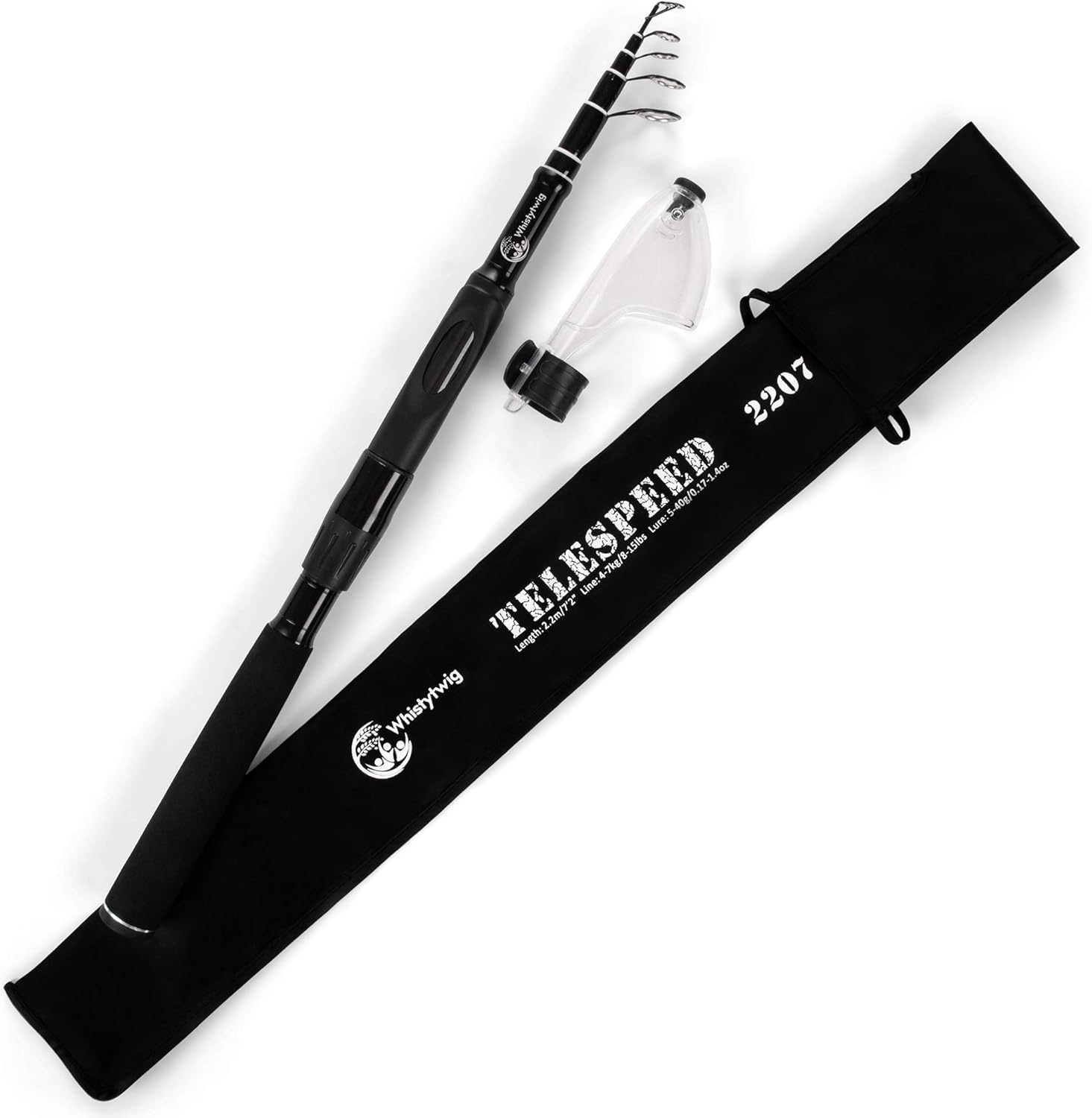
Whistytwig Telescopic Fishing Rod
Crafted with high-quality materials to withstand the rigors of harsh environments. Carbon fiber rod with stainless steel line guides or ceramic line guides on the casting and Midnight fishing poles.
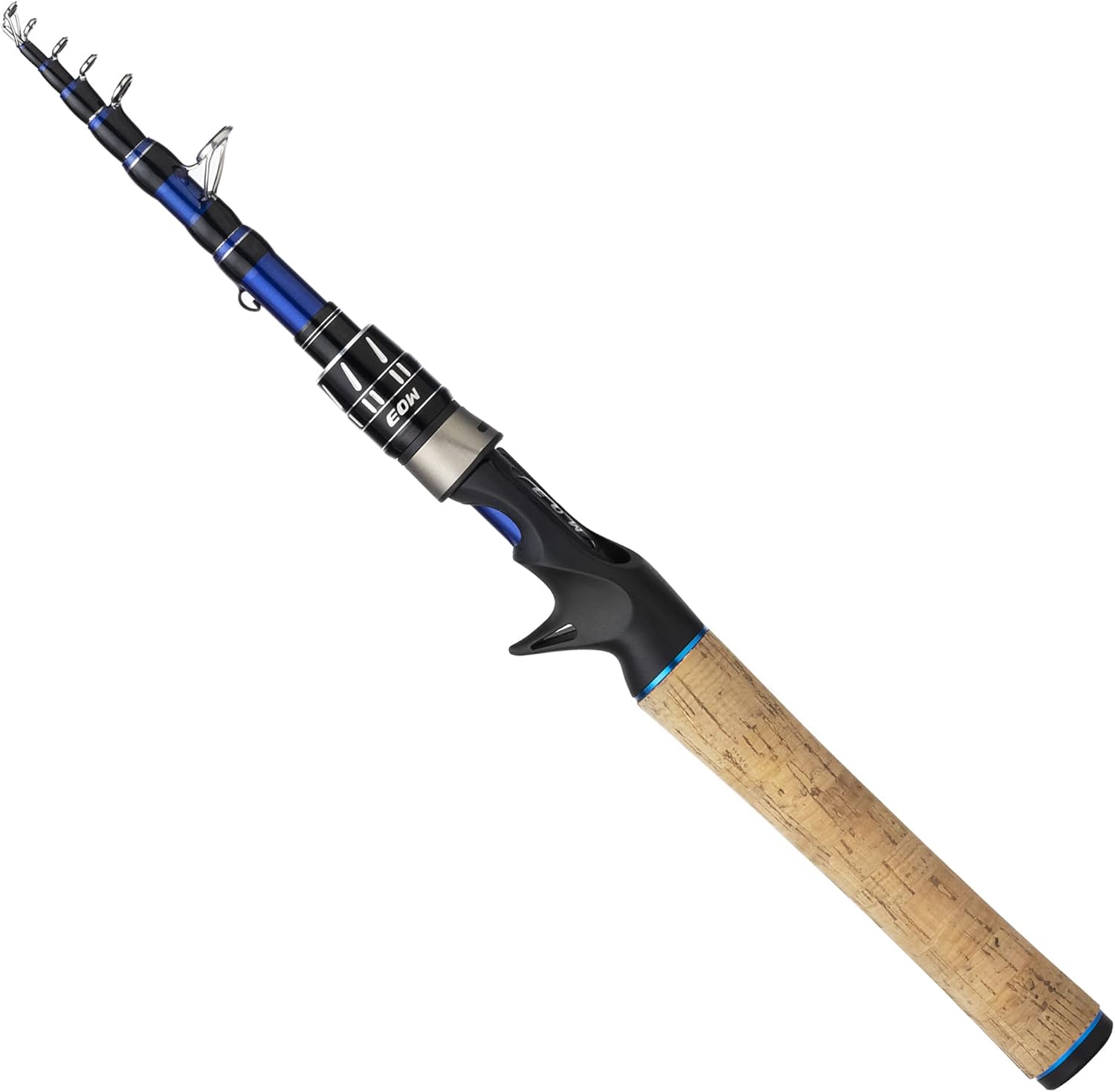
EOW XPEDITE PRO Fishing Rods
Crafted from 24T carbon and epoxy. The tips are solid carbon for extra flexibility. The reel seats are high-quality ABS with CNC aluminum parts, and the grips are dense and resistant EVA with cork.

KastKing Compass Fishing Rod
KastKing Compass spinning and casting telescopic fishing rods are the perfect, go anywhere travel fishing rod. These rods collapse down to just 17” long to travel anywhere.
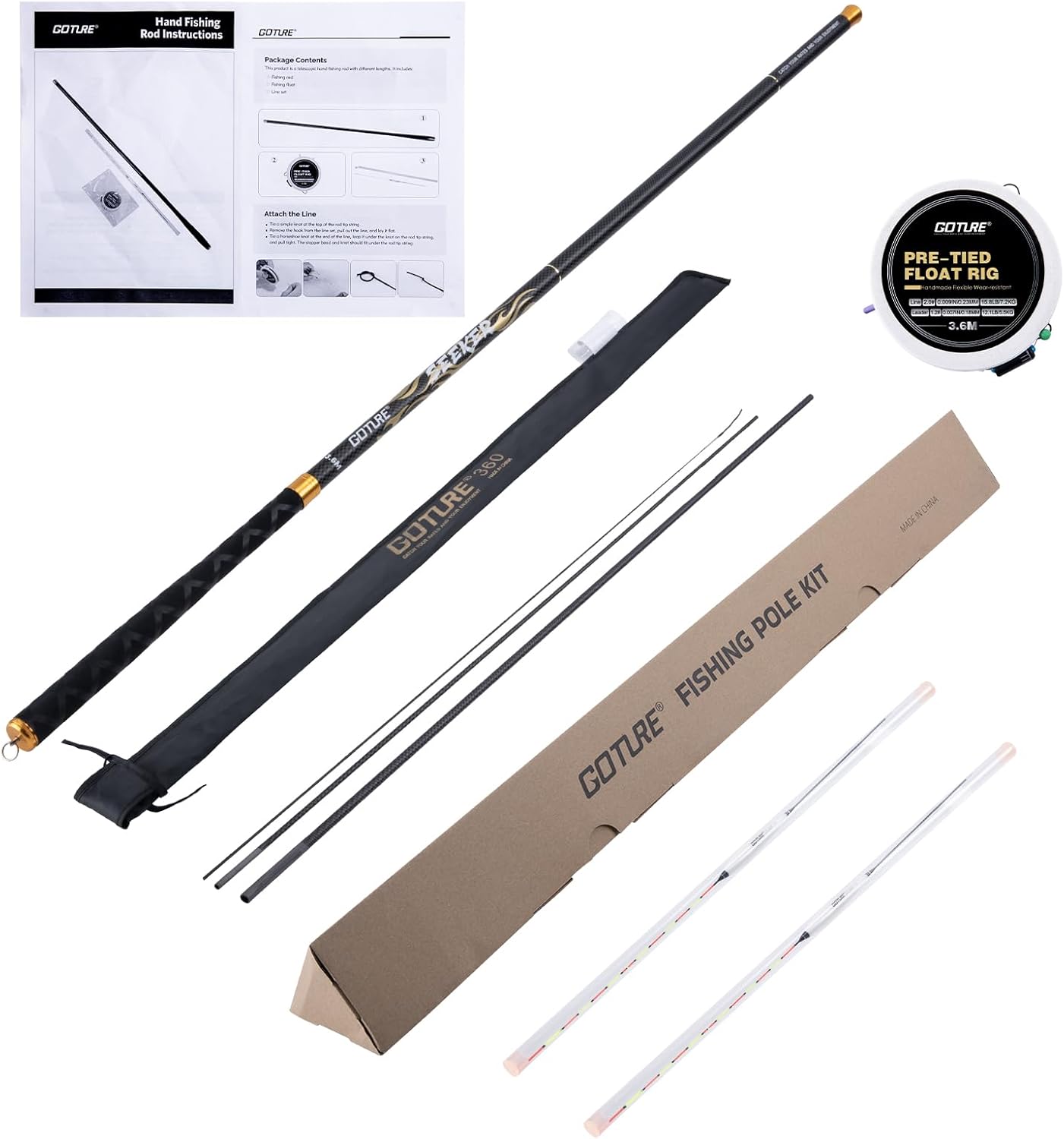
Goture Tenkara Telescopic Rod
Made from 30T carbon fiber, very light, and includes extra tip segments for on-trail repairs. I like how it’s great for small stream trout and has a smooth cast.

Zebco 33 Micro Adventure Combo
Comes as a full combo, collapses to just 14 inches, with a reel already attached. It’s my go-to for quick setups and spontaneous casts along forest trails.
All of these rods can withstand tough conditions, but they each shine in slightly different areas. Choose based on your needs for length, weight, and intended target species. For those new to backpacking, starting with a combo like the Zebco 33 makes setup and transport especially easy—everything you need in one package.
Setting Up and Caring for Your Rod
Getting the longest life from a telescopic rod is not hard, but it does take attention. During cleanup, I always rinse the rod, dry it fully, and collapse each segment gently to avoid pinching dirt inside. For storage, I keep it in a ventilated spot, not jammed into a packed bag for long periods. Occasionally, I wipe the joints with a silicone cloth to prevent sticking. For anglers looking for more care instructions, this guide to telescopic rod maintenance is really helpful.
Ensuring your rod stays functional means inspecting for sand and grit after every trip, tightening loose guides, and replacing any worn parts before your next hike. Taking small steps can add years to your rod’s usable life and keeps your gear ready for the next spontaneous adventure.
Common Questions About Backpacker Telescopic Rods
I often get questions about the practicality of these rods in different situations. Here are some that come up regularly:
Can I use a telescopic rod for both freshwater and saltwater?
With the right materials and regular rinsing, many rods will work for both. Just watch for models rated as corrosion-resistant if you plan to visit the coast.
What size fish can I expect to handle?
Most ultralight models are best for fish up to one or two pounds, though some can handle more if you take your time. I use heavier versions for bigger species, but for backpacking streams, ultralight usually makes the most sense.
Does telescopic design weaken the rod?
Modern materials have made a big difference, but they aren’t indestructible. I avoid high-stress moves like hauling fish over rocks and keep the rod extended only when fishing to help it last longer.
Are telescopic rods suitable for beginners?
Absolutely. Their simple design and quick setup make them very accessible. Just read the included instructions for extending and collapsing the rod to avoid user errors.
How Ultralight Telescopic Rods Fit Into the Backpacking Lifestyle
Bringing a telescopic rod along for a hike means I can fish wherever opportunity strikes, whether it’s alpine lakes, secret creeks, or even a pond beside my tent. For me, it’s about flexibility without extra burden. Fishing after a tough climb or long walk helps me wind down and adds an extra layer of adventure to the trip.
The connection between hiking and fishing deepens the whole outdoor experience—it isn’t just about the catch, but also the peaceful moments with nature, away from crowds or busy parking lots. With these rods in my pack, I get to enjoy more time in wild places and make memories trying out new waters.
For anyone who values travel, exploration, and a bit of fishing along the way, an ultralight telescopic rod is an easy addition that can turn any hike into a chance for a fresh catch. Wrapping up, if you love both hiking and fishing, these telescopic rods will make your outdoor adventures a lot more fun and flexible. Check out some recommended models, and happy fishing out on the trail!
Most Recent Articles:
- 14 Tips And Tactics For Public Land Mule Deer Hunting

- 6 Features of Waterproof Ground Blinds For Wet-condition Elk Hunting
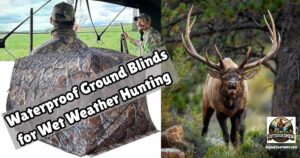
- 4 of the Best DIY Elk Hunting Areas In Colorado

- 8 Tips for Choosing the Best DIY Elk Hunting States

- 5 Hunting Gear Packing List Essentials For DIY Trips

- 7 Tips For Hunting The Elk Migration

As always, stay safe, enjoy the journey, and please try to leave it cleaner than you found it. If you have any comments, questions, ideas, or suggestions, please leave them in the comment section below, and I’ll get back to you ASAP. You can follow us on YouTube: Man Art Creations for videos of our DIY Adventures.
P.S. Thanks so much for checking out our blog; we really appreciate it. Just so you know, we may receive a commission if you click on some of the links that appear on our site. This helps us keep our content free and up-to-date for everyone. We appreciate your support!

